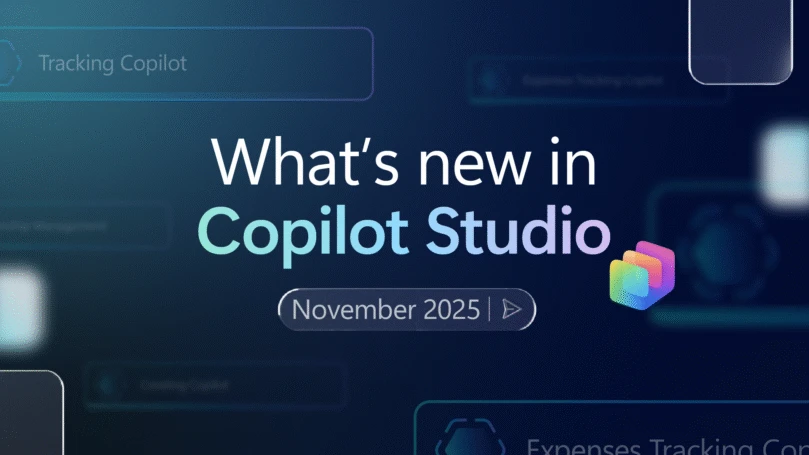Today marks Global Accessibility Awareness Day, one of the days we get to celebrate the progress our customers and partners have made to make their workplaces more inclusive, and then look ahead to what more we can do as a community to empower everyone in the workplace.
We celebrate because our customers are empowering their employees both with the accessible technology built into Microsoft 365, and with the inclusive cultural practices that make people love coming to work. We are comparing notes and learning from them as we also build that same inclusive culture at Microsoft.
Here in the U.K., we recently celebrated a milestone—a point on our journey—with recognition from the U.K. Government as a Disability Confident Leader. This status is awarded to organizations that commit to diversity and inclusion and encourage suppliers and vendors to do the same. Our team has worked tirelessly to put processes in place that can both create and sustain a diverse and inclusive culture; attracting and recruiting people with disabilities via our global Inclusive Hiring Program; training managers to understand the needs of those with visible and non-visible disabilities; assessing people for roles more flexibly so those with disabilities have the best opportunity to show their skills; adjusting workplaces to include sign language interpreters, and ensuring all staff have access to disability equality awareness training.
Looking ahead
We also look ahead to our big vision—an accessible and inclusive workplace for everyone—and what more we can do as a company and as a community to make it a reality. Today we’re excited to announce that live captions and subtitles in PowerPoint are rolling out now, and will soon be generally available to Microsoft 365 and Office 365 subscribers worldwide for Windows, Mac, and the web. We also look forward to the coming release of other new inclusive technologies built into Microsoft 365, like live captions and subtitles in Teams Meetings.
Present inclusively with live captions and subtitles in PowerPoint—We know how powerful a great presentation can be—whether it inspires us or aligns us to a common goal. Now, with support for 12 spoken languages and 60+ on-screen captions or subtitle languages, people who are deaf or hard of hearing can be included in these important team building moments. Additionally, with an increasingly global and remote set of collaborators, those who speak a different language from the presenter, or are listening in from a loud environment, can also more easily be included.
Transform the meeting experience for people with disabilities—We also know the critical role meetings play in how we work, and recently announced that live captions and subtitles will also be available in Teams Meetings. These capabilities are coming soon as a preview in English and complement the captioning and transcription features already generally available for recorded Teams meetings and live events in Stream, Teams, and Yammer. Whether in a 1-1 with your manager, or a company-wide all hands, everyone should feel included when the team gets together to meet, including people who are deaf or hard of hearing.
We constantly release new features and improvements to make our products not just compliant with the latest standards, but empowering for all users, both with and without disability. We encourage you to read all about these features in the Microsoft Accessibility Features Sway.
Building the inclusive workplace together
Many of our customers are committed to making this vision of an inclusive workplace a reality and are partnering with us to make it happen. Last month the Federal Government of Canada chose Microsoft as a partner in their effort to create a more modern and accessible Public Service. The Honourable Carla Qualtrough, Minister of Public Services and Procurement and Accessibility, said, “Equipping our public servants with accessible, reliable, and innovative technologies will unleash the potential of our world-class public service and result in better service delivery for all Canadians.” Here at Microsoft we agree—only when we represent the diversity we see in the world internally can we build the most innovative technology and serve our customers as they ought to be served.
We also see Rogers Communications, a leading Canadian communications and media company, shares our vision of a more inclusive workplace. Rogers is doing everything from transforming their physical workplace to be more collaborative and inclusive, to using the accessible technologies built into the Microsoft 365 applications their employees can use every day. Best of all, we’re helping and learning from each other along the way—our teams work regularly with Rogers to understand how our technology can better support their commitment to building an inclusive workplace, and Rogers’ Persons with Disability Diversity group works with us to learn how we embed Inclusive Design principles into our products and our culture. Read the full blog, published today, to learn more about how Rogers is building an accessible and inclusive culture to benefit employees, customers, and the broader community.
Join us!
We have so much more to do—as an organization, an employer, a leader, and a follower—in this journey towards an accessible and inclusive workplace, and we hope you’ll join us. Visit the Microsoft Accessibility site to learn more about our approach. Share your learnings with #LearningTogether and #GAAD and continue the conversation with @MSFTEnable on Twitter.




